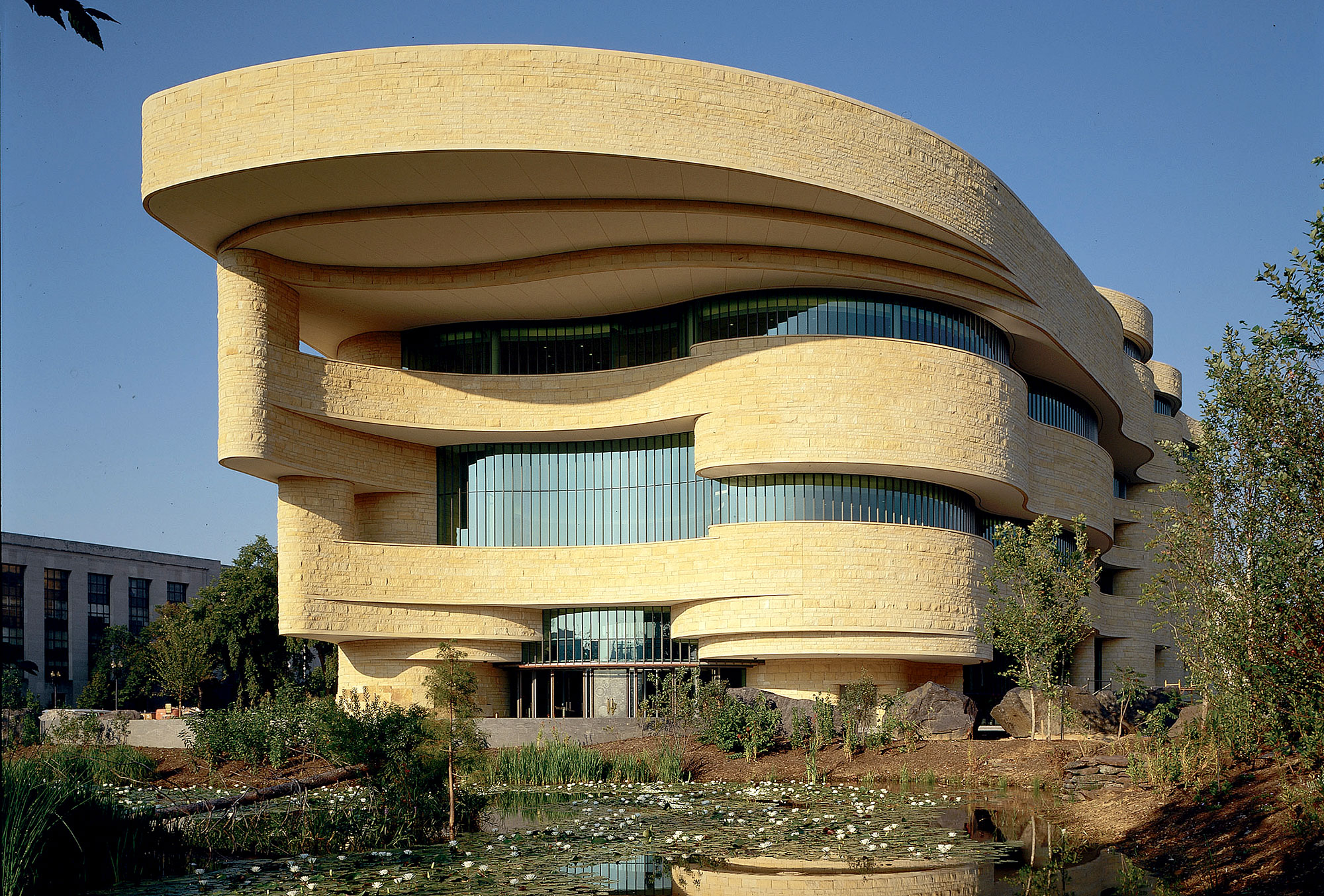After 20 Years, Ancestor Rock, Kānepō, To Return Home to Hawaiʻi
After two decades representing the western cardinal point of the Smithsonian’s National Museum of the American Indian on the National Mall, the volcanic pōhaku (rock) named Kānepō will return to its home on the Island of Hawaiʻi this summer. In preparation for Kānepō’s departure, a ceremony will be held July 1 during the Smithsonian Folklife Festival. The ceremony will take place at 11 a.m. in the museum’s Potomac Atrium and will be led by Kekuhi Kealiʻikanakaʻole, who is a kumu hula (master teacher of the art of hula), educator, scholar and founder of Hālau ʻŌhiʻa, a program designed to deepen connection and relationship with the Earth through Hawaiʻi life ways.
An integral element of the landscape, Kānepō has stood with three other cardinal markers to represent the vastness of the museum’s scope and the special inclusion of Native Hawaiians. The three remaining markers will remain in their locations on the museum grounds.
Kānepō was selected by the Kūpuna (Elders) consultation group for Hawaiʻi Volcanoes National Park. The group, composed of Native Hawaiians with genealogical ties to the lands that the park stewards, as well as retired park personnel, consults with the National Park Service staff on traditional practices.
Unlike the other three cardinal markers that were given outright to American Indian Museum, Kānepō was loaned to the museum for 20 years with the expectation that the stone would be returned. A new pōhaku has been selected to take its place and is scheduled to arrive at the museum in the fall. The new pōhaku also will also be named Kānepō and return to Hawai’i after 20 years.
The 2024 Folklife Festival will be held on the National Mall opposite the National Museum of the American Indian from June 26 through July 1. This year’s festival celebrates the museum and the people whose voices it amplifies. “Indigenous Voices of the Americas: Celebrating the National Museum of the American Indian” will highlight the living traditions of Indigenous peoples and honor contemporary and traditional creative expressions, celebrations and community connections, and feature more than 250 participants from 60 Indigenous communities in the United States, Canada, Mexico, Guatemala, Peru, Bolivia, Chile, Argentina and Brazil.
About the Museum
In partnership with Native peoples and their allies, the National Museum of the American Indian fosters a richer shared human experience through a more informed understanding of Native peoples. The museum strives toward equity and social justice for the Native peoples of the Western Hemisphere through education, inspiration and empowerment. Through two locations, it features exhibitions and programs in New York City and the National Mall in Washington, D.C. For additional information, including hours and directions, visit AmericanIndian.si.edu. Follow the museum on Facebook, Instagram, X, YouTube, LinkedIn and Pinterest.
# # #
SI-216-2024
Becky Haberacker
202-633-5183
haberackerb@si.edu
Lisa Austin
212-514-3826

